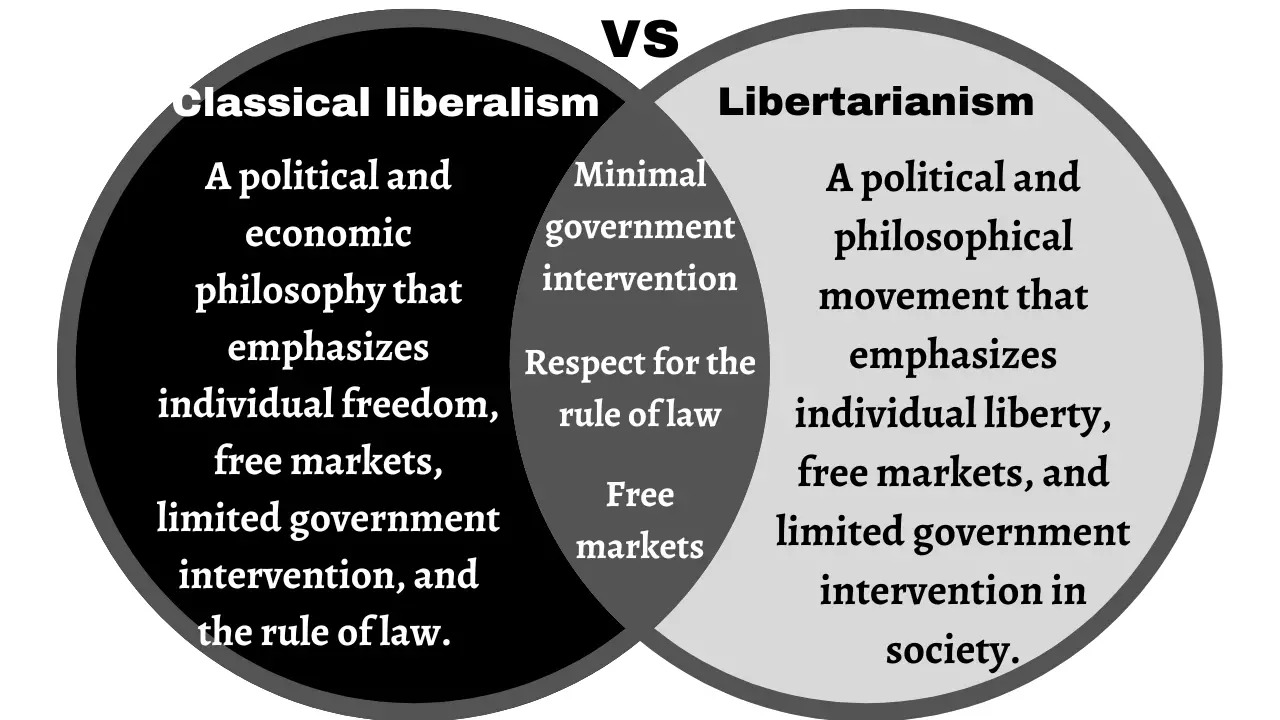Home>Technology and Computers>Roguelite Vs Roguelike: Unraveling The Key Differences


Technology and Computers
Roguelite Vs Roguelike: Unraveling The Key Differences
Published: February 4, 2024
Discover the distinctions between roguelite and roguelike games in the realm of technology and computers. Explore the key differences and find out which style suits your gaming preferences.
(Many of the links in this article redirect to a specific reviewed product. Your purchase of these products through affiliate links helps to generate commission for Noodls.com, at no extra cost. Learn more)
Table of Contents
Introduction
The gaming world has witnessed a surge in the popularity of roguelike and roguelite games in recent years. These genres offer a unique and challenging gaming experience that has captivated players around the globe. While the terms "roguelike" and "roguelite" may sound similar, they represent distinct styles of gameplay with subtle yet significant differences. Understanding these disparities is crucial for both seasoned and novice gamers.
In this article, we will delve into the intricacies of roguelike and roguelite games, unraveling the key differences between the two genres. By exploring their gameplay mechanics, procedural generation, permadeath feature, progression systems, and difficulty levels, we aim to provide a comprehensive understanding of what sets these genres apart. Whether you're a dedicated gamer seeking new adventures or a curious enthusiast eager to learn more about these captivating game styles, this exploration will shed light on the distinct characteristics of roguelike and roguelite games.
So, grab your controller, buckle up, and embark on this exhilarating journey through the captivating realms of roguelike and roguelite games. Let's unravel the mysteries and distinctions that define these enthralling gaming experiences.
Read more: She Vs. Her: Unraveling The Key Differences
Definition of Roguelite
Roguelite, a subgenre of role-playing games (RPGs), has gained significant traction in the gaming community. This style of gameplay draws inspiration from the traditional roguelike genre while incorporating certain modifications that distinguish it from its predecessor.
At its core, roguelite games share many fundamental characteristics with roguelikes, such as procedurally generated levels, challenging gameplay, and permanent death. However, roguelites typically offer a more forgiving experience, featuring elements that allow players to carry over certain progress between runs. This departure from the strict permadeath mechanic of roguelikes is a defining feature of roguelite games.
In roguelite games, players often encounter persistent progression systems that enable them to unlock new abilities, items, or characters as they make repeated attempts to conquer the game. This progression mechanic introduces a layer of continuity, allowing players to gradually enhance their capabilities and delve deeper into the game's challenges with each playthrough.
Furthermore, roguelites commonly incorporate a variety of gameplay mechanics and features that contribute to a more accessible and approachable experience. These may include the inclusion of meta-progression elements, which grant players the opportunity to augment their characters' abilities or acquire permanent upgrades over time. Additionally, some roguelites provide a broader range of starting options, enabling players to customize their initial loadout or character traits before embarking on their perilous journey.
It's important to note that while roguelites exhibit a degree of leniency compared to traditional roguelikes, they still maintain the essence of unpredictability and high-stakes gameplay that define the roguelike genre. This delicate balance between challenge and accessibility distinguishes roguelite games as an enticing option for both hardcore enthusiasts and those new to the genre.
In essence, roguelite games offer a captivating blend of roguelike elements with additional features that cater to a broader audience. By embracing the spirit of permadeath and procedural generation while introducing innovative mechanics that facilitate progression and customization, roguelites carve out a distinct identity within the realm of RPGs, captivating players with their dynamic and engaging gameplay.
This section provides a comprehensive overview of roguelite games, shedding light on their defining characteristics and the nuanced differences that set them apart from traditional roguelikes. As we continue our exploration, we will delve deeper into the distinct features that shape the landscape of roguelite and roguelike gaming experiences.
Definition of Roguelike
Roguelike games, a genre deeply rooted in the history of gaming, embody a distinct set of characteristics that define their captivating and challenging gameplay. Originating from the classic game Rogue, roguelikes have evolved over the years, retaining their core principles while adapting to modern gaming landscapes.
At their essence, roguelike games are known for their unforgiving nature, featuring procedurally generated levels, permadeath mechanics, and turn-based gameplay. These games often emphasize strategic decision-making, resource management, and adaptability, presenting players with a formidable and unpredictable experience.
One of the defining traits of roguelike games is their adherence to permadeath, a feature that heightens the stakes and intensifies the sense of risk and reward. When a player's character meets an untimely demise within the game, the consequences are irreversible, leading to a fresh start from the beginning. This uncompromising aspect of roguelikes instills a sense of urgency and significance in every action, elevating the intensity of each playthrough.
Furthermore, the procedural generation of game elements, including levels, items, and enemy encounters, contributes to the dynamic and unpredictable nature of roguelike games. This randomized approach ensures that no two playthroughs are alike, fostering a sense of discovery and novelty with each new adventure.
Roguelike games also commonly feature turn-based gameplay, allowing players to carefully plan their actions and reactions in a strategic manner. This deliberate pacing encourages thoughtful decision-making and tactical prowess, adding a layer of depth and complexity to the gameplay experience.
In summary, roguelike games epitomize the essence of challenging and unpredictable gameplay, characterized by permadeath, procedural generation, and turn-based mechanics. Their unwavering commitment to high-stakes, strategic decision-making, and dynamic experiences has solidified their status as a beloved and enduring genre within the gaming community. As we unravel the distinct features of roguelike and roguelite games, it becomes evident that each genre offers a unique and compelling gaming experience, catering to diverse preferences and playstyles.
Gameplay Mechanics
In the realm of roguelike and roguelite games, the gameplay mechanics serve as the foundation upon which the captivating and challenging experiences unfold. These mechanics encompass a diverse array of elements that shape the interactive dynamics, strategic depth, and immersive qualities of these genres.
Roguelike games are renowned for their turn-based gameplay, which introduces a deliberate and methodical pace to the action. This mechanic encourages players to carefully plan their moves, consider potential risks, and devise tactical approaches to overcome formidable adversaries and treacherous environments. The turn-based nature of roguelikes fosters a sense of strategic engagement, allowing players to immerse themselves in a world where each decision carries significant weight and consequences.
On the other hand, roguelite games often feature real-time or action-oriented gameplay, injecting a dynamic and fast-paced dimension into the experience. This departure from the turn-based structure of traditional roguelikes introduces a heightened sense of urgency and adrenaline-fueled encounters, challenging players to exhibit quick reflexes, adaptability, and decisive decision-making amidst the chaos and unpredictability of the game world.
Moreover, both roguelike and roguelite games incorporate procedural generation, a fundamental mechanic that bestows each playthrough with a unique and ever-changing landscape. Procedural generation encompasses the randomized creation of levels, environments, items, enemy placements, and other game elements, ensuring that no two adventures unfold in the same manner. This dynamic approach cultivates a sense of exploration, discovery, and replayability, as players navigate through uncharted territories and encounter diverse challenges with each new iteration.
Another pivotal aspect of gameplay mechanics in roguelike and roguelite games is the implementation of intricate and diverse character abilities, item interactions, and environmental factors. These mechanics contribute to the depth and complexity of the gameplay, offering players a rich tapestry of strategic options, synergies, and emergent gameplay scenarios. Whether it involves mastering a diverse arsenal of weapons and spells, leveraging character-specific traits and abilities, or adapting to environmental hazards and traps, the gameplay mechanics in these genres invite players to engage in dynamic problem-solving and creative approaches to overcoming obstacles.
In essence, the gameplay mechanics in roguelike and roguelite games form the backbone of the immersive and challenging experiences they offer. By intertwining strategic decision-making, procedural generation, diverse character abilities, and dynamic gameplay dynamics, these mechanics lay the groundwork for captivating adventures that beckon players to embark on thrilling and unpredictable journeys time and time again.
Procedural Generation
Procedural generation stands as a cornerstone of both roguelike and roguelite games, imbuing each playthrough with a sense of novelty, unpredictability, and boundless potential. This dynamic mechanic encompasses the automated creation of game elements, such as levels, environments, items, and enemy placements, through algorithmic processes. By harnessing the power of procedural generation, these games offer an ever-changing and infinitely diverse landscape for players to explore, conquer, and unravel.
In roguelike games, procedural generation serves as a catalyst for crafting intricate and labyrinthine dungeons, treacherous landscapes, and enigmatic realms that teem with peril and possibility. Each descent into the depths of these procedurally generated environments unfolds as a unique odyssey, replete with hidden passages, perilous traps, and formidable adversaries lurking around every corner. The dynamic nature of procedural generation ensures that no two expeditions into the heart of these ever-shifting domains are alike, fostering a sense of discovery, challenge, and emergent gameplay that captivates players with its boundless creativity.
Similarly, in roguelite games, procedural generation bestows an air of unpredictability and excitement upon the game world, offering an ever-evolving canvas for players to navigate and conquer. Whether it's the sprawling landscapes of uncharted territories, the enigmatic layouts of procedurally generated levels, or the diverse array of items and encounters that await, the dynamic nature of procedural generation infuses each playthrough with a sense of wonder and exploration. This mechanic ensures that players are constantly presented with fresh challenges, new discoveries, and unexpected twists, fostering a gaming experience that remains engaging and enthralling with every iteration.
Moreover, procedural generation serves as a catalyst for fostering replayability, as players embark on countless adventures shaped by the whims of algorithmic creativity. The allure of venturing into uncharted territory, uncovering hidden secrets, and confronting unforeseen challenges beckons players to embrace the ever-changing tapestry of procedurally generated worlds, each offering a unique and unforgettable journey.
In essence, procedural generation stands as a defining feature of roguelike and roguelite games, breathing life into their immersive and dynamic worlds. By embracing the boundless potential of algorithmic creativity, these games invite players to embark on a multitude of captivating adventures, each infused with the magic of procedural generation and the promise of uncharted horizons.
Permadeath
Permadeath, a hallmark feature of roguelike and roguelite games, embodies the concept of irreversible character death, resulting in the termination of the current playthrough. This uncompromising mechanic introduces a sense of urgency, significance, and risk to every action and decision made within the game world. When a player's character succumbs to the perils of the game, whether it be due to formidable foes, environmental hazards, or unforeseen mishaps, the consequences are profound and irreversible.
In roguelike games, permadeath serves as a defining element that underpins the high-stakes nature of the gameplay. The specter of permanent demise looms over every encounter, imbuing each action with a palpable sense of consequence. This unforgiving mechanic fosters a climate of tension, challenge, and strategic decision-making, compelling players to weigh their choices carefully and navigate the treacherous landscapes with vigilance and cunning. The looming threat of permadeath infuses every moment with a sense of gravity, transforming each playthrough into a gripping and immersive experience where survival hinges on wit, skill, and a measure of luck.
Similarly, roguelite games embrace the essence of permadeath while offering a degree of leniency through persistent progression systems. Although character death remains permanent, players often retain certain progress, such as unlocked abilities, items, or character upgrades, that carry over to subsequent runs. This delicate balance between the unforgiving nature of permadeath and the prospect of gradual advancement creates a compelling dynamic, where each defeat serves as a stepping stone towards greater mastery and accomplishment. The presence of permadeath in roguelite games heightens the stakes, infusing the gameplay with tension and significance, while the prospect of incremental progression imbues each defeat with the promise of growth and resilience.
In essence, permadeath stands as a defining feature of roguelike and roguelite games, shaping the landscape of their gameplay with its unyielding consequences and profound impact. Whether it's the unrelenting trials of roguelikes or the nuanced interplay of challenge and progression in roguelites, the presence of permadeath infuses these genres with a sense of urgency, significance, and exhilaration, cementing their status as captivating and unforgettable gaming experiences.
Progression System
The progression system in roguelike and roguelite games plays a pivotal role in shaping the player's journey and fostering a sense of growth, accomplishment, and adaptability within the game world. While both genres embrace the concept of permanent death and procedural generation, their approach to progression diverges, offering distinct yet compelling dynamics that enrich the gameplay experience.
In roguelike games, the progression system often revolves around the mastery of game mechanics, strategic decision-making, and the accumulation of knowledge and experience across successive playthroughs. As players navigate the perilous depths of procedurally generated dungeons and confront formidable adversaries, they glean valuable insights, hone their skills, and uncover hidden strategies that contribute to their overall progression. The sense of gradual mastery and adaptation serves as a testament to the resilience and resourcefulness of players as they confront the unyielding challenges presented by the game.
On the other hand, roguelite games introduce a layered progression system that intertwines the unforgiving nature of permadeath with the prospect of incremental advancement. While character death remains a permanent outcome, players often retain certain progress from their previous runs, such as unlocked abilities, persistent upgrades, or character enhancements. This nuanced interplay between risk and reward imbues each defeat with the potential for growth, resilience, and newfound capabilities, fostering a sense of continuity and empowerment that transcends individual playthroughs.
Moreover, roguelite games frequently incorporate meta-progression elements, allowing players to invest in permanent upgrades, unlock new characters or classes, and expand their arsenal of tools and abilities over time. This meta-progression framework introduces a compelling layer of long-term investment, as players strive to augment their capabilities and unlock new avenues for exploration and conquest. The presence of meta-progression not only rewards perseverance and dedication but also infuses each playthrough with the promise of evolving strategies, diverse gameplay experiences, and a sense of meaningful progression that transcends the boundaries of individual runs.
In essence, the progression system in roguelike and roguelite games serves as a testament to the enduring spirit of resilience, adaptability, and growth that defines these genres. Whether it's the gradual mastery and strategic acumen of roguelikes or the nuanced interplay of challenge and progression in roguelites, the progression system stands as a testament to the dynamic and captivating nature of these enthralling gaming experiences.
Difficulty
The concept of difficulty forms the bedrock of the roguelike and roguelite gaming experiences, shaping the intensity, challenge, and exhilaration that define these captivating genres. Both roguelikes and roguelites are renowned for their unforgiving nature, presenting players with formidable obstacles, unpredictable encounters, and high-stakes gameplay that demand resilience, adaptability, and strategic acumen.
In roguelike games, the difficulty is characterized by its unyielding and relentless nature, where every decision carries weight, and every action holds consequences. The intricate web of permadeath, procedural generation, and strategic gameplay mechanics converges to create a formidable and immersive challenge that beckons players to test their mettle and cunning. The unforgiving landscapes of roguelikes demand unwavering focus, tactical prowess, and a measure of luck, as players navigate treacherous dungeons, confront daunting adversaries, and unravel the mysteries of procedurally generated realms. The difficulty of roguelikes serves as a crucible for resilience, resourcefulness, and adaptability, where each triumph is earned through perseverance and strategic ingenuity.
On the other hand, roguelite games embrace a more approachable yet equally compelling approach to difficulty. While maintaining the essence of unpredictability and high-stakes gameplay, roguelites introduce elements that offer a degree of leniency, allowing players to gradually overcome the challenges presented by the game. The presence of persistent progression systems, meta-progression elements, and a broader range of starting options contributes to a nuanced and engaging difficulty curve that accommodates both seasoned adventurers and newcomers to the genre. The dynamic interplay of risk and reward in roguelites fosters an environment where each defeat serves as a stepping stone towards greater mastery and accomplishment, offering a captivating journey of growth, discovery, and triumph.
In essence, the difficulty of roguelike and roguelite games transcends mere obstacles and adversaries, embodying a spirit of resilience, adaptability, and triumph in the face of adversity. Whether it's the unyielding trials of roguelikes or the nuanced interplay of challenge and progression in roguelites, the difficulty of these genres stands as a testament to the captivating and unforgettable gaming experiences they offer.
Conclusion
In conclusion, the exploration of roguelike and roguelite games has unveiled a rich tapestry of captivating and distinct gaming experiences. These genres, rooted in the traditions of challenging gameplay and unpredictable adventures, offer a dynamic and immersive landscape for players to navigate, conquer, and unravel. The key differences between roguelikes and roguelites, from their gameplay mechanics to their approach to difficulty and progression, underscore the diverse and compelling nature of these genres.
Roguelike games stand as a testament to unyielding challenge, strategic decision-making, and the unforgiving nature of permadeath. Their turn-based gameplay, procedural generation, and intricate progression systems weave a tapestry of high-stakes adventures that demand resilience, resourcefulness, and strategic acumen. Each descent into the procedurally generated depths of roguelikes unfolds as a unique odyssey, replete with hidden passages, perilous traps, and formidable adversaries, fostering a sense of discovery, challenge, and emergent gameplay that captivates players with its boundless creativity.
On the other hand, roguelite games carve out a distinct identity by infusing the spirit of permadeath and procedural generation with innovative mechanics that facilitate progression and customization. Their real-time or action-oriented gameplay, persistent progression systems, and nuanced difficulty curve offer a more approachable yet equally compelling experience. The interplay of risk and reward in roguelites fosters an environment where each defeat serves as a stepping stone towards greater mastery and accomplishment, offering a captivating journey of growth, discovery, and triumph.
As players embark on countless adventures shaped by the whims of algorithmic creativity, the allure of venturing into uncharted territory, uncovering hidden secrets, and confronting unforeseen challenges beckons them to embrace the ever-changing landscapes of roguelike and roguelite games. Whether it's the unrelenting trials of roguelikes or the nuanced interplay of challenge and progression in roguelites, these genres stand as a testament to the captivating and unforgettable gaming experiences they offer.
In essence, the exploration of roguelike and roguelite games has illuminated the captivating and distinct qualities that define these genres. Their unwavering commitment to high-stakes, strategic decision-making, and dynamic experiences has solidified their status as beloved and enduring genres within the gaming community. Whether players seek the unyielding challenge of roguelikes or the nuanced interplay of risk and reward in roguelites, these genres offer a diverse and captivating array of gaming experiences that cater to a myriad of preferences and playstyles.














